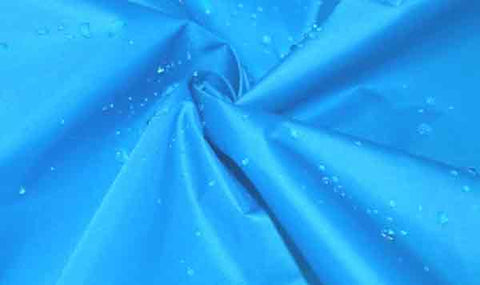Usually, when we buy a backpack, the description of the fabric in the manual is not very detailed, only CORDURA or HD. All it says is a weaving method. But the detailed description should be material + fiber degree + textile method. For example: N. 1000D CORDURA, which means 1000D nylon CORDURA material.
Many people think that the "D" in woven materials stands for density, which is wrong. D is short for denier. is the unit of measurement for fiber. The calculation method is: 1 gram per 9,000 meters of wire is called Denier. So, the smaller the number in front of D, the thinner the line and the smaller the density. For example, the 210D material has a very fine texture, and is generally used as the lining of the bag or as inner compartment. The 900D or 1000D material has thick texture and thick lines, and is very wear-resistant. It is generally used as the bottom of the bag.
Let's talk about materials first. Generally, the raw materials of fabrics used in bags are Nylon and Poly, and occasionally the two materials are mixed together. Nylon is nylon and Poly is polyethylene. Both of these materials are extracted from petroleum. Nylon is better in quality than Poly, and of course it is more expensive. From the fabric, Nylon feels softer.
Oxford nylon (OXFORD)
The warp thread of Oxford spinning is made of two strands of thread, and the weft thread is relatively thicker thread. The weaving method is one up and down, which is a very general weaving method. Generally 210D, 420D material. The reverse side is coated. Use as a bag lining or compartment.

Imitation DuPont Nylon (KODRA)
KODRA is a fabric produced in Korea. To a certain extent it can replace CORDURA. It is said that the inventor of this fabric originally wanted to study how CORDURA was spun, but in the end, he did not study it, but invented a new fabric, which is KODRA. This fabric is also generally woven with Nylon, and its strength is also based on fiber degree, such as 600D and 1000D. The reverse side is coated, similar to CORDURA.

High Density Nylon (HD)
HD is the abbreviation of High Density, which means high density. Look at the fabric and OXFORD is similar. Generally 210D, 420D, usually used as the lining or compartment of the bag. The reverse side is coated.

Over glued nylon ( R/S )
R/S is short for Rip stop. The fabric is nylon with small squares. Its toughness is stronger than that of general nylon, and the outer edges of the squares on the fabric are made of thicker threads. The middle of the square is woven with very fine thread. Generally, there are 300D, 330D, 450D, etc., which can be used as the main materials of backpacks, such as large noodles, outer pockets and other parts. The reverse side is coated.

Tig Nylon (Dobby)
Dobby's fabric seems to be composed of many very small lattices, but if you look closely, you will find that it is woven with two kinds of threads, one thick and one thin, and the patterns on the front and back are different. Generally has little coating. The strength is much worse than CORDURA, and it is generally only used in leisure bags or short-distance laptop backpack travel. Not used in a mountaineering bag.

Super strong nylon (VELOCITY)
VELOCITY is also a nylon cloth. Intensity is high. It is also generally used in mountaineering bags. The reverse side is coated. Available in 420D or higher strength. The fabric front looks like Dobby.

Waterproof Nylon (TAFFETA)
TAFFETA is a very thin coated fabric, some are coated more than once, so the waterproof performance is better. Generally, it is not used as the main fabric of the backpack, but only as a raincoat, or as a rain cover for a backpack.

Polyethylene glue (Poly PU)
Generally use Poly instead. Poly density is generally 64t (low), 74t (medium), 82t (high). Fabrics are getting stronger and stronger from 150D to 1800D. Generally, the strength as high as 600D can be used as the bottom of the mountaineering bag, however, its weaving method is not as strong as CORDURA.
AIR MESH
It is different from the ordinary network. There is a gap between its mesh surface and the material below, generally 3mm or more. And it is this kind of gap that makes it have good ventilation performance, so it is generally used as a strap or back or other places close to the body. There are many specifications of general nets, and nylon nets are generally only placed on both sides of the bag as a sundries pocket or a water bottle pocket when used in bags.

It is characterized by good breathability and moisture removal. It also has strong anti-acid and alkali resistance and anti-ultraviolet ability. They first became popular in the 70s and are still one of the most popular materials in backpacks today. Most manufacturers use polyester interchangeably with nylon, depending on the brand.
The advantages are high elasticity and high elasticity and good recovery. Generally, 2% can improve the sense of movement, drape and shape retention of the fabric. The weak point is weak resistance to alkali; it is prone to yellowing and embrittlement when exposed to chlorine or ultraviolet rays. It also has poor heat resistance. Often used as an auxiliary material and blended with other materials. The more famous materials are LYCRA from DUPON in the United States, "Dorlastan" from Bayer in Germany; "Roica" from A.k (Asahi Kasei) in Japan.

The advantages are high strength, high wear resistance, high chemical resistance and good resistance to deformation and aging. The disadvantage is that it feels hard. The more famous ones are PERTEX and CORDURA.So, when you see Cordura or PERTEX mentioned in your yellow backpack or other color backpack, you get a goog quality material backpack!
Now you know which material about your backpack? Comment down below :)


